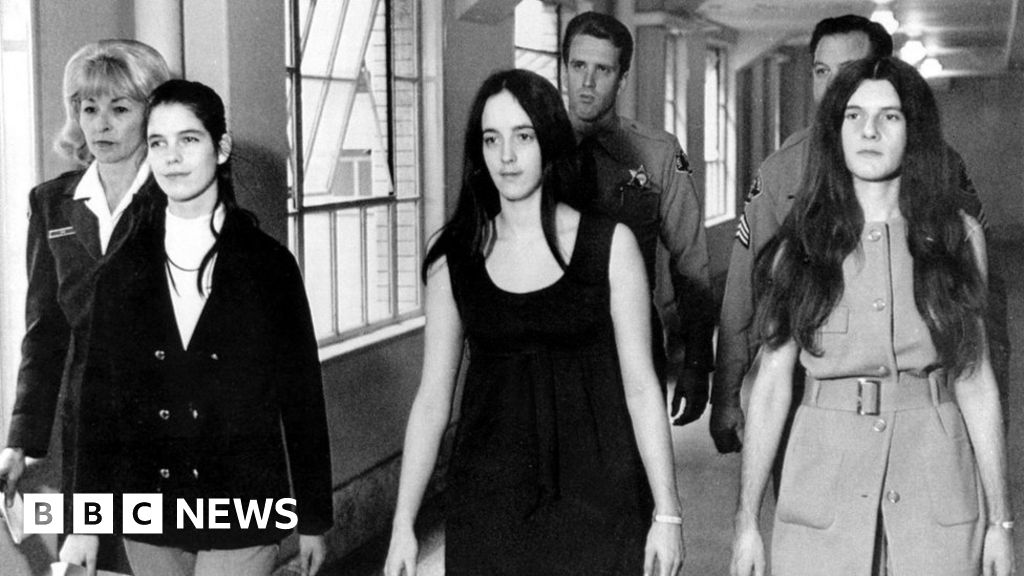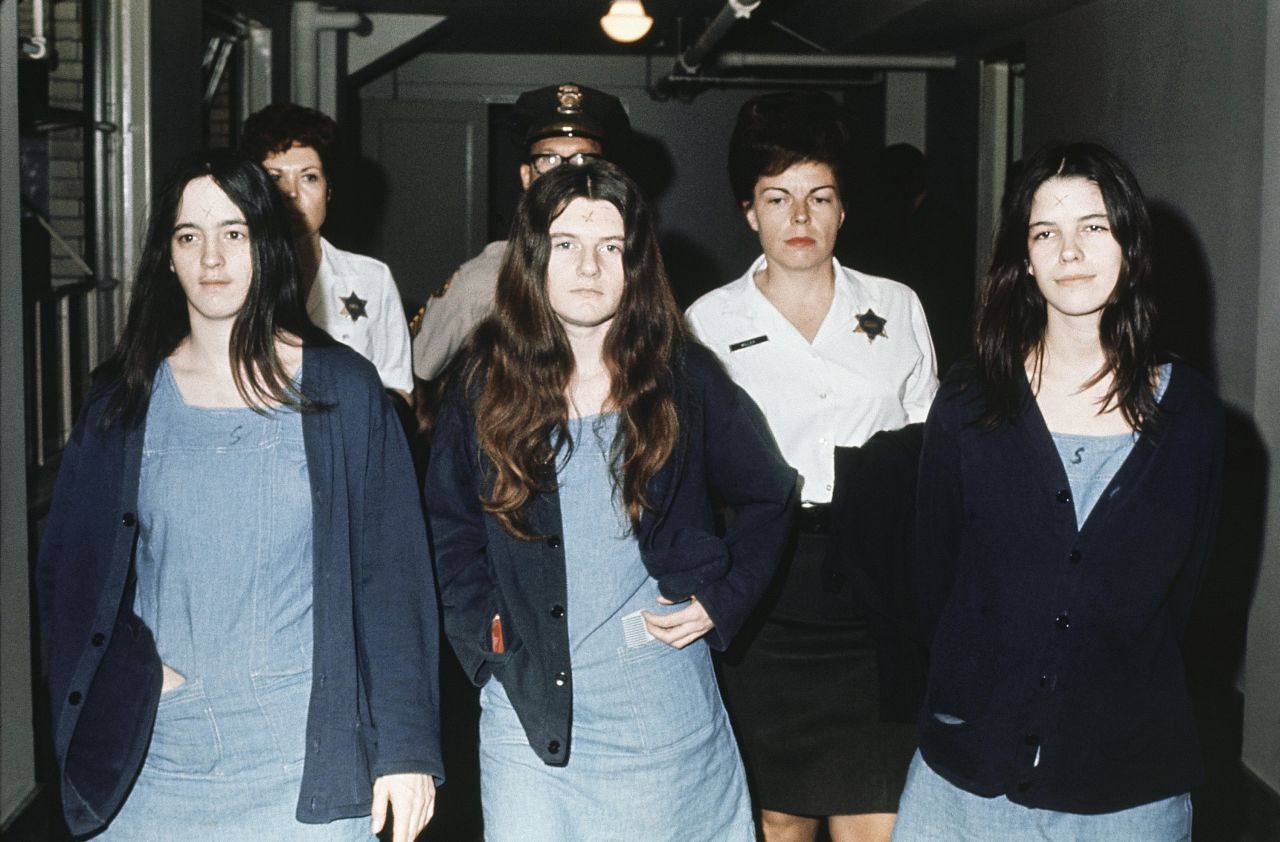Manson Murders - A Look Back At The 1969 Events
In the late summer of 1969, a chilling wave of fear, you know, swept across Los Angeles. This was when a series of truly awful crimes, later known as the Manson murders, took place, leaving a lasting mark on the city's spirit. People were, in a way, just trying to make sense of the sudden, brutal violence that seemed to appear out of nowhere.
Over two very dark nights in August of that year, seven people, innocent folks really, had their lives taken away in the most dreadful fashion. The sheer horror of it all, well, it caused widespread panic and a deep sense of unease throughout the entire area. It was a time when folks really felt like their safe spaces had been invaded, a rather unsettling feeling.
Now, as the fiftieth anniversary of these acts approached, there's still a lot of talk, a lot of questions, about who was involved, what exactly went down, where these terrible things happened, and, perhaps most importantly, why. This piece, you see, tries to sort through some of that, giving you a clearer picture of those disturbing events that, in some respects, still resonate today.
Table of Contents
- Charles Manson - A Figure of Infamy
- What Exactly Happened During the Manson Murders?
- Who Were the Victims of the Manson Murders?
- How Did the Manson Family Operate?
- What Led to the Apprehension of the Manson Family?
- The Aftermath - Trials and Lasting Impact of the Manson Murders
Charles Manson - A Figure of Infamy
Charles Manson, a name that, well, just about everyone recognizes, became central to these terrible events. He was, in essence, the head of a group of followers who became known as the "Manson Family." This group, a kind of cult, was the instrument through which these horrifying acts were carried out. His influence over his followers was, apparently, quite strong, leading them to commit deeds that shocked the entire country. He himself didn't, you know, get his hands dirty with the actual killing, but he was the one giving the directions.
Personal Details - Charles Manson
| Detail | Description |
|---|---|
| Role | Cult leader, orchestrator of the 1969 murders |
| Involvement | Directed followers to commit acts of violence |
| Legal Status | Put on trial for murder, convicted |
| Group Affiliation | Head of the "Manson Family" cult |
What Exactly Happened During the Manson Murders?
The core of the "Manson murders" refers to a series of awful crimes that unfolded over a couple of summer nights in Los Angeles. It was, frankly, a period of intense terror that settled over the city, as people woke up to news of truly unspeakable acts. The events were, in a way, so unexpected and so brutal that they sent shivers down the spines of many, many people.
The Night of August 9th - The First Manson Murders
On a particularly hot summer evening, August 9th, 1969, some of the most hideous crimes the world had, arguably, ever seen took place. This first wave of violence, later to be identified as part of the Manson murders, happened at a house situated high up, in a secluded spot. Pregnant actress Sharon Tate, who was just living her life, along with Jay Sebring, Abigail Folger, Wojciech Frykowski, and Steven Parent, were, well, brutally killed by members of the Manson Family. It was a scene of utter devastation, a truly heartbreaking loss of life that, you know, shocked everyone to their core.
The news of these killings spread like wildfire, causing a deep sense of dread to settle over the community. People started to lock their doors, a bit more tightly than usual, and a general feeling of unease filled the air. It was a time when the very idea of safety seemed, in some respects, to vanish, replaced by a gnawing fear of the unknown. The horror of that night, basically, became a defining moment for many who lived through it.
The Following Night - More Manson Murders
The terror, sadly, didn't stop there. The very next night, August 10th, 1969, the Manson Family continued their brutal actions, taking the lives of Leno and Rosemary LaBianca. This second set of killings, also part of the broader "Manson murders" saga, added to the widespread fear that had gripped Los Angeles. The fact that these terrible events occurred over two successive nights just intensified the feeling that something truly, truly dark was at play. It was, you know, as if the city was holding its breath, wondering what horror might come next.
The repeated nature of these attacks, the sheer coldness of them, made people feel incredibly vulnerable. There was a palpable sense of panic that, quite literally, spread throughout the city of Los Angeles. Residents were, in a way, looking over their shoulders, wondering if they or their loved ones might be next. The events of those two nights, really, left an indelible mark on the collective memory of the area, a grim reminder of how quickly peace can be shattered.
Who Were the Victims of the Manson Murders?
The victims of the Manson murders were, in essence, innocent people whose lives were tragically cut short. On August 9th, 1969, actress Sharon Tate, who was pregnant at the time, was killed. Along with her, Jay Sebring, Abigail Folger, Wojciech Frykowski, and Steven Parent also lost their lives. Then, on August 10th, Leno and Rosemary LaBianca were also taken. In total, over those two dreadful nights, seven people were, well, brutally murdered. The source text also mentions that Charles Manson and his followers were responsible for the deaths of "at least 9 people" during their terrible actions, which suggests other victims beyond these seven, though not named here. It was, truly, a terrible loss of life.
The sheer number of lives lost, and the violent manner in which they were taken, added to the shock and horror surrounding the Manson murders. Each person had their own story, their own future, which was, in a way, just abruptly ended. The impact of these losses extended far beyond the immediate families, affecting the entire community and, indeed, the nation. It was a stark reminder of the fragile nature of existence, particularly when faced with such senseless acts, and, you know, it left a lasting sadness.
How Did the Manson Family Operate?
The Manson Family, the group behind these awful acts, operated under the direct command of their leader, Charles Manson. They were, basically, a cult, and their actions during the Manson murders were not random. Instead, they were following specific instructions from Manson himself. This structure, with Manson at the top giving orders, is what allowed such terrible deeds to occur. It's almost as if they were pawns in a very, very dark game, doing what they were told without question, which is, in a way, pretty unsettling to think about.
The Cult Leader's Grip on the Manson Murders
Charles Manson held a very strong influence over his group of followers, which, you know, allowed him to direct the horrific Manson murders. His followers were, apparently, so deeply committed to him that they carried out his commands, even when those commands involved taking the lives of others. He didn't, as a matter of fact, personally participate in the actual killing, but he was the mastermind, the one pulling the strings. This kind of control, where one person can sway others to commit such dreadful acts, is a truly disturbing aspect of the entire case, and it speaks to the powerful, perhaps even manipulative, nature of his personality.
The idea that a group of people could be so completely under the sway of one individual, enough to carry out such brutal acts, is, frankly, a chilling thought. The "Manson Family" killers, as they became known, were, essentially, instruments of Manson's will. Their actions, though their own, were, in a way, a direct result of his directions. This aspect of the case, the complete devotion of the followers, is a key part of trying to understand the terrible events of the Manson murders, and it's something that, you know, still puzzles many people.
What Led to the Apprehension of the Manson Family?
After the terrible events of the Manson murders, the process of bringing those responsible to justice began. The individuals who were behind these August 1969 killings were, eventually, apprehended. This meant that the authorities were able to identify and capture the members of the Manson Family who had committed the actual deeds. Once they were caught, Charles Manson himself was also put on trial for murder alongside them. It was, in a way, a huge step towards closure for a city that had been gripped by fear, a moment when people could, perhaps, breathe just a little easier knowing that those responsible were facing consequences.
The investigations that followed the Manson murders were, understandably, intense. Law enforcement worked to piece together the events, to understand who was involved and how they were connected to Charles Manson. The fact that Manson, despite not doing any of the actual killing himself, was brought to trial and held accountable for these deaths, really shows the extent of his role as the orchestrator. It was a complex legal situation, but the goal was clear: to bring those who caused such terror to account for their actions, and, you know, to ensure justice was served.
The Aftermath - Trials and Lasting Impact of the Manson Murders
The true story of the Manson murders, as it unfolded in the courts, became a focal point for the public. The trials that followed the apprehension of the Manson Family members were, basically, a significant event, drawing a lot of attention. Charles Manson, as the cult leader, was a central figure in these proceedings, even though he didn't, you know, personally commit the violent acts. His conviction, along with those of his followers, marked a crucial step in the legal process and, in a way, began the long road to processing the trauma these events caused.
The impact of the Manson murders went far beyond the immediate victims and their families. It caused a deep sense of terror across the entire city of Los Angeles, and, frankly, the country. The idea that a group of people, under the command of one individual, could carry out such heinous acts, was a truly unsettling thought for many. The memory of these events, the sheer brutality of them, has lingered for decades. Even as the 50th anniversary of these crimes approached, there was still a need to, in some respects, untangle the who, what, where, and why of the case, showing just how deeply these events, you know, affected society.
The story of the Manson murders, including the later passing of those connected to the case, continues to be a subject of discussion and analysis. It serves as a stark reminder of the dark side of human nature and the destructive power of cult influence. The events of August 1969, the fear they generated, and the legal battles that followed, all contribute to a complex and disturbing chapter in American history. It's a tale that, in a way, prompts ongoing reflection on how such horrors could have come to pass, and what lessons, if any, can be drawn from them.

Charles Manson death: Where are the Family members now?

The Manson Murders: What to Read, Watch and Listen To - The New York Times

Manson Family Murders Fast Facts | CNN